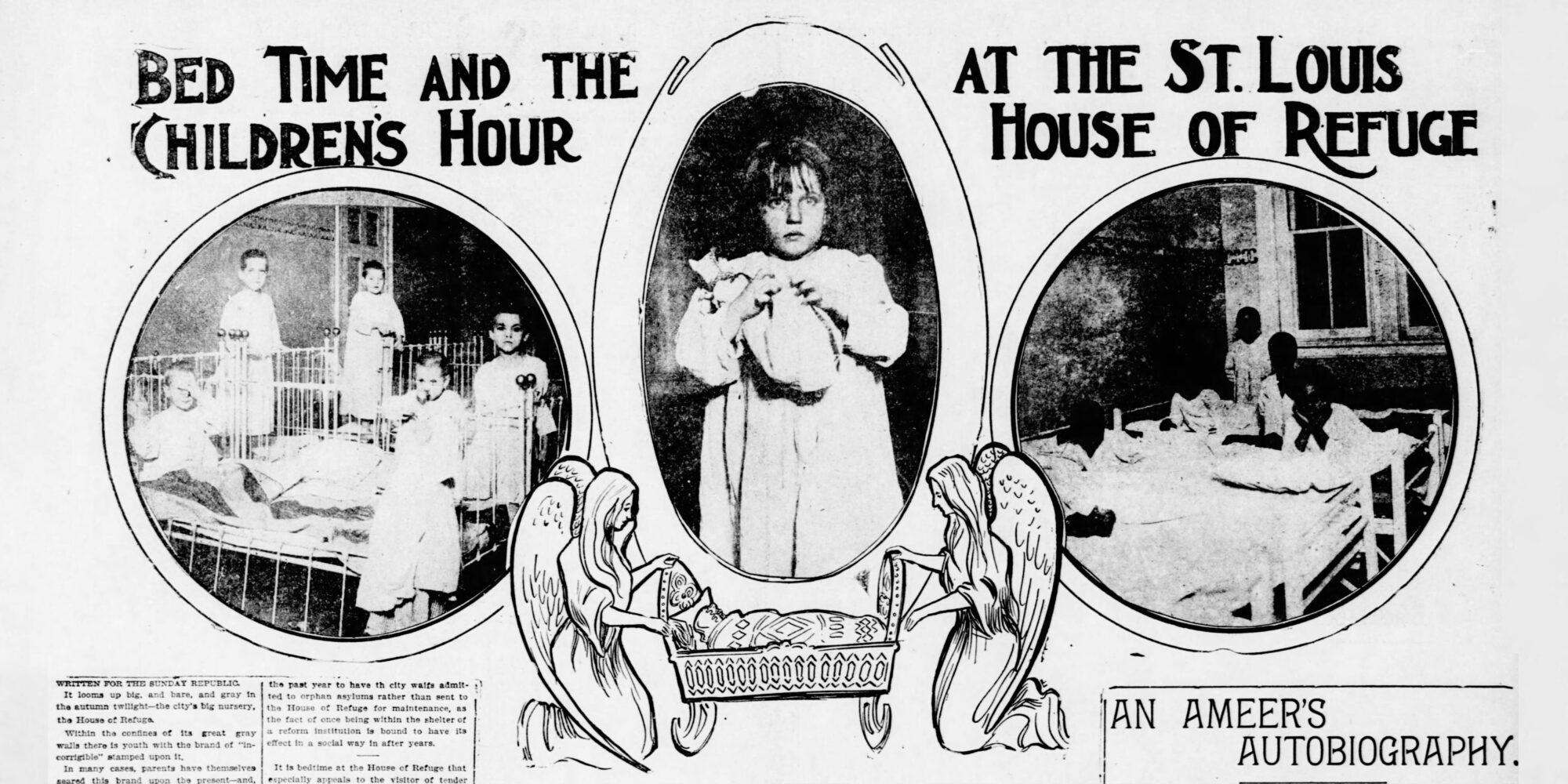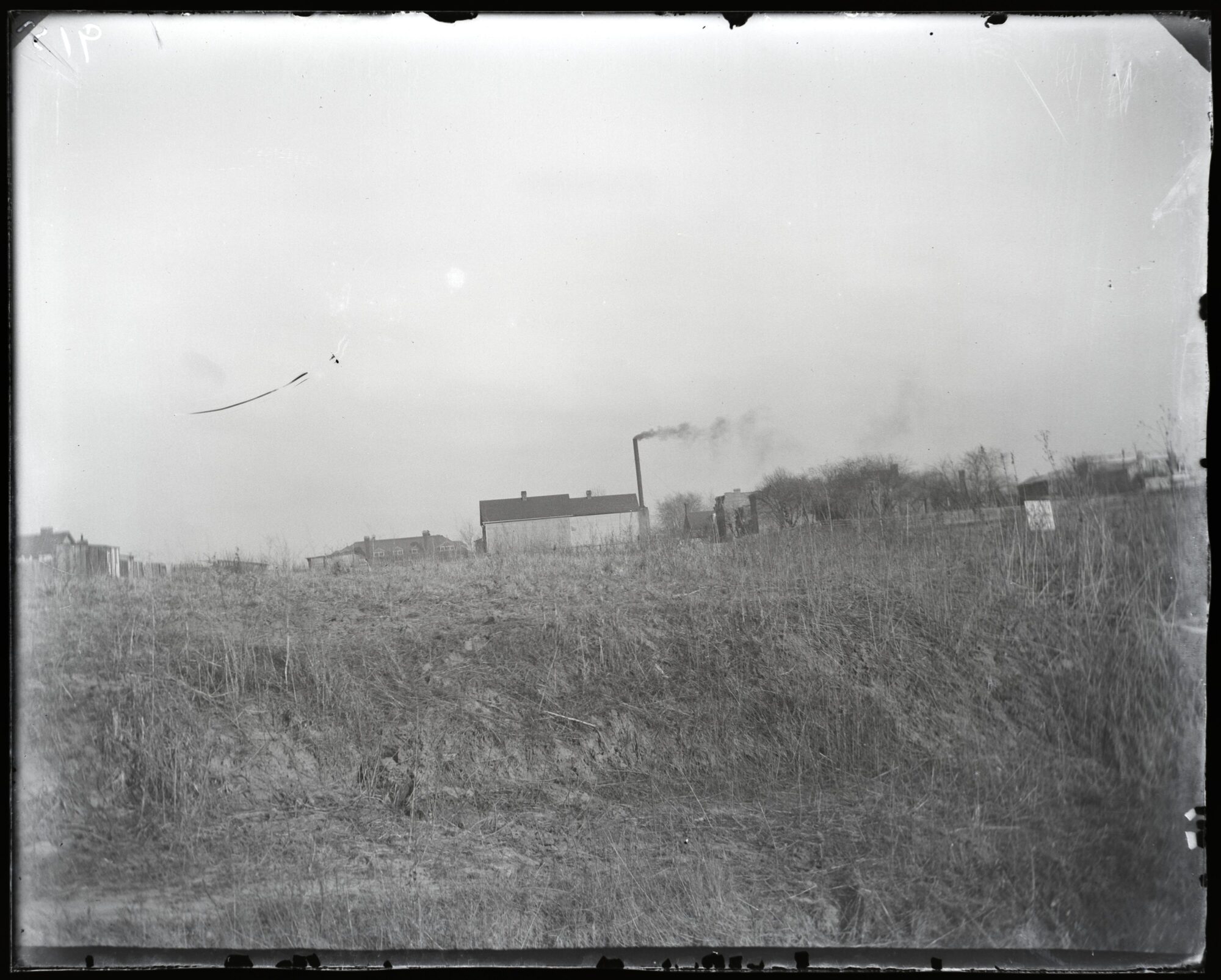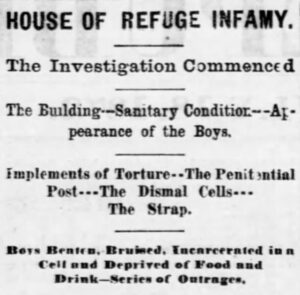
Marquette Park is the crown jewel of Dutchtown, but the story of what was there before is… complicated.
The House of Refuge was established in 1854 at the site of what would later become Marquette Park. We’ll get back to their mission statement in a moment because in 1861, before the House of Refuge was complete, the Government borrowed the building for the purposes of a Civil War hospital.
The hospital opened in August 1861 and served Union troops.
It had neither stoves, nor bedsteads, nor beds, nor bedding, nor food, nor nurses, nor anything prepared. The first hundred arrived at night. They had been brought in wagons a hundred and twenty miles, over a rough road, by hurried marches, suffering for food and water, from Springfield to Rolla, and thence by rail to St. Louis to the station on Fourteenth street. There, having had nothing to eat for ten hours, they were put into furniture carts and carried the remaining three miles. Bare walls, bare floors, and an empty kitchen received them; but the kind-hearted surgeon, Bailey, did all he could to make kindness take the place of good fare. He obtained from the neighbors cooked food for their supper. The poor fellows were so shattered and travel-worn, but no word of complaint did we ever hear one of them utter.
Western Sanitary Commission, 1864
The hospital conditions improved over time, and within the first year, there were 4,999 admissions and 276 deaths.

When the Civil War was over, the hospital was converted back to what it was originally intended to be: The House of Refuge.
The name sounds lovely, right? Like a rest stop for weary travelers. Well, that wasn’t exactly the case.
The House of Refuge was half orphanage, half jail.
If you were a child and you committed a crime, you were sent to the House of Refuge. If you were a child whose parents committed a crime and were sent to jail, you were sent to the House of Refuge.
Those in charge would tell you that the House of Refuge existed to instill morals into amoral children. The kids went to school, went to work caning chairs or worked at the adjacent farm, played, ate well, had clean linens, etc. They made it sound almost… nice (except for the child labor part).
For years, there were rumors about what went on behind the walls of the House of Refuge. In July 1872, a warrant was issued against House of Refuge Superintendent Gleason on the charge of willful and malicious oppression.
The superintendent of the House of Refuge in Cleveland sent a letter to the Grand Jury in St. Louis, stating that Mr. Gleason was a “narrow-minded, self-conceited, bigoted fanatic, who has compelled and inaugurated and practiced at the House of Refuge the most damnable and cruel system that ever disgraced an American reformatory.”
Punishments at the House of Refuge included:
- Removal of play and exercise
- Being sent supperless to bed
- Deprivation of food, except bread and water, at regular mealtime
- Solitary confinement
- Corporal punishment and physical abuse
The Grand Jury declared that radical changes should be made. It remains unclear if any of those radical changes were ever made, as over the years, the House of Refuge continued to receive accusations of inhumane treatment of children.
In 1915, a “Correctional Farm” was established at the site of Fort Bellefontaine, and the kids from House of Refuge were shipped off to the farm.
The buildings on the site of the original House of Refuge were demolished, and the land was converted into the park we now know as Marquette. I think we can all agree that the space serves the community far better when it’s used to bring kids joy, not pain.
The above history of the House of Refuge is courtesy of Erica Threnn. More of Erica’s mini-histories from across St. Louis can be found on her Instagram page, @found.stlouis.
A larger version of the top image from the November 3rd, 1901 issue of the St. Louis Republic can be found at this link.
You can find more articles on the history of Dutchtown at dutchtownstl.org/history.
